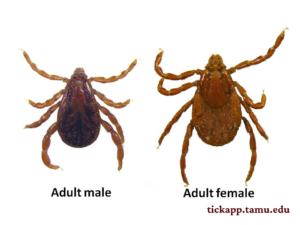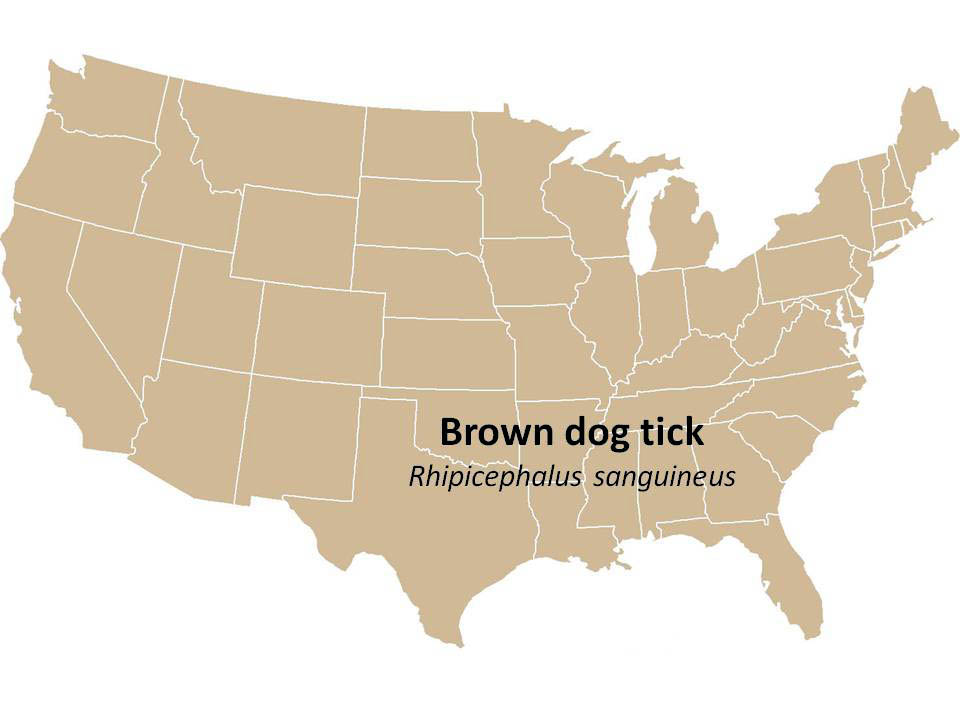
Species: Rhipicephalus sanguineus Latreille
Family: Ixodidae (Acari)
Description: Adult ticks uniformly exhibit light-to-dark brown coloration. No noticeable ornate markings or body patterns are described, but festoons and functional eyes are present.

Distribution: Worldwide. This tick is commonly found throughout most populated areas of the US, and is primarily associated with human habitations, including animal pens and canine kennels located within urban, suburban, and rural environments. In North America, this tick is seldom found outside these spaces or in uninhabited wild and forested areas.
Hosts: Dogs are the primary host for this tick across all stages in North America. However, larvae and nymphs have been known to attach to other animals, and all stages are occasionally known to bite humans.
Biology: These three-host ticks are very prolific, and individual gravid females can lay up to 4,000 eggs. Once hatched, larvae and nymphs may persist for 6-9 months, and adult ticks have been reported to survive unfed for over 18 months. All stages are resilient to desiccation, resulting in their observed persistence in/around and human dwellings and surrounding spaces. These ticks are often observed inside residences or other infested structures literally crawling up the walls. Activity of all stages is generally reported from late spring to early autumn, but questing may occur year-round in warmer regions of its range.
Associated Disease Pathogens: The brown dog tick has been reported to transmit the bacterial agent Ehrilichia canis,responsible for Canine Monocytic Ehrlichiosis (CME) and E. ewingii,[causing Canine Granulocytic Ehrlichiosis (CGE)] in dogs, and E. chaffeensis, the pathogen responsible for causing human ehrlichiosis [a.k.a. human monocytic ehrlichiosis (HME)]. The brown dog tick has also been reported to transmit the bacterium Rickettsia ricksettsii, causing Rocky Mountain Spotted Fever (RMSF) in humans in the southwestern US and Mexico, and R. conorii responsible for boutonneuse fever (a.k.a. Mediterranean Spotted Fever) in humans in parts of southern Europe and Africa. This tick has also been reported to vector the parasite Hepatozoan canis and Babesia canis (canine babesiosis) to dogs. The brown dog tick is also reported to acquire Trypanosoma cruzi experimentally and T. christophersi from feeding on dogs with accute infections.
